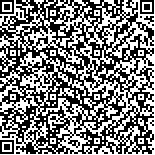| Quote
: |
卢青青,范婷婷,万彩云,张伟,谢梦洲,李亮.基于Ca2+浓度及线粒体氧化应激探讨补阳还五汤对脊髓损伤大鼠受损红核神经元的保护作用[J].湖南中医药大学学报英文版,2023,43(4):598-604.[Click to copy
] |
|
| |
|
|
| This paper
:Browser 2218times Download 1089times |
| 基于Ca2+浓度及线粒体氧化应激探讨补阳还五汤对脊髓损伤大鼠受损红核神经元的保护作用 |
| 卢青青,范婷婷,万彩云,张伟,谢梦洲,李亮 |
| (湖南中医药大学中医诊断学湖南省重点实验室, 湖南 长沙 410208;湖南中医药大学中医心肺病证辨证与药膳食疗重点研究室, 湖南 长沙 410208;湖南中医药大学中西医结合学院, 湖南 长沙 410208) |
| 摘要: |
| 目的 从Ca2+浓度及线粒体氧化应激的角度探讨补阳还五汤(Buyang Huanwu Decoction, BYHWD)对脊髓损伤(spinal cord injury, SCI)气虚血瘀证红核神经元的影响。方法 将大鼠随机分为5组:对照组、模型组、BYHWD低剂量组(BL组)、BYHWD中剂量组(BM组)和BYHWD高剂量组(BH组)。除对照组外,其余4组均采用游泳力竭法联合红核脊髓束(rubrospinal tract, RST)横断术制备SCI气虚血瘀证模型。BL组、BM组、BH组大鼠分别以BYHWD生药12.825、25.650、51.300 g/kg的剂量灌胃,对照组和模型组以生理盐水灌胃。采用斜板实验检测大鼠的肢体运动功能,血液流变学检测血液的状态,氧化应激和抗氧化能力检测红核超氧化物歧化酶(superoxide dismutase, SOD)活性和丙二醛(malondialdehyde, MDA)含量,原子分光光度法测定红核Ca2+浓度,透射电子显微镜观察红核线粒体的状态。结果 术后第1、第14、第28天,模型组斜板实验角度均明显低于对照组(P<0.01)。术后第14、第28天,BL组、BM组、BH组斜板实验角度均明显高于模型组(P<0.01);BL组斜板实验角度明显低于BH组(P<0.01)。与术后第1天比较,术后第14、第28天BL组、BM组、BH组斜板实验角度均明显升高(P<0.01)。与对照组比较,模型组全血低切黏度、全血中切黏度、全血高切黏度、红细胞聚集指数、卡松黏度、MDA含量和Ca2+浓度均明显升高(P<0.01),SOD含量明显降低(P<0.01)。与模型组比较,BL组、BM组、BH组全血低切黏度、全血中切黏度、全血高切黏度、红细胞聚集指数、卡松黏度和Ca2+浓度均明显降低(P<0.01),BM组、BH组MDA含量均明显降低(P<0.05或P<0.01),BH组SOD含量明显升高(P<0.05)。与BH组比较,BL组、BM组卡松黏度均明显升高(P<0.05)。模型组出现线粒体结构模糊、排列紊乱、染色质边集的典型凋亡现象。BL组、BM组、BH组线粒体结构变得清晰,数目增多,染色质边集现象改善,其中,BH组改善最为明显。结论 BYHWD对SCI气虚血瘀证大鼠受损红核神经元有保护作用,促进肢体运动功能的恢复,其机制可能与BYHWD调节血液微循环,改变线粒体形态,增强线粒体抗氧化应激能力,降低Ca2+浓度有关。 |
| 关键词: 脊髓损伤 补阳还五汤 Ca2+ 线粒体 氧化应激 红核神经元 气虚血瘀证 |
| DOI:10.3969/j.issn.1674-070X.2023.04.004 |
| Received:November 07, 2022 |
| 基金项目:湖南省自然科学基金项目(2022JJ30435,2018JJ2289)。 |
|
| Protective effects of Buyang Huanwu Decoction on damaged rubrospinal neurons in rats after spinal cord injury based on Ca2+ concentration and mitochondrial oxidative stress |
| LU Qingqing,FAN Tingting,WAN Caiyun,ZHANG Wei,XIE Mengzhou,LI Liang |
| (Provincial Key Laboratory of TCM Diagnostics, Hunan University of Chinese Medicine, Changsha, Hunan 410208, China;Key Laboratory of TCM Heart and Lung Syndrome Differentiation & Medicated Diet and Dietotherapy, Hunan University of Chinese Medicine, Changsha, Hunan 410208, China;College of Integrated Chinese and Western Medicine, Hunan University of Chinese Medicine, Changsha, Hunan 410208, China) |
| Abstract: |
| Objective To discuss the effects of Buyang Huanwu Decoction (BYHWD) on rubrospinal neurons after spinal cord injury (SCI) of qi deficiency and blood stasis pattern from Ca2+ concentration and mitochondrial oxidative stress.Methods The rats were randomly divided into 5 groups: control, model, low-dose BYHWD (BL) group, medium-dose BYHWD (BM) group and high-dose BYHWD (BH) group. The SCI models of qi deficiency and blood stasis pattern were established in model, BL, BM and BH groups with swimming exhaustion method combined with rubrospinal tract (RST) transection, except for the control group. The BL, BM and BH groups were intragastrically perfused with crude BYHWD 12.825, 25.650, 51.300 g per kilogram of bodyweight, respectively. The control and model groups were given normal saline. The motor function of limbs was determined by inclined plate test, the blood state was tested by hemorheology, the superoxide dismutase (SOD) activity and malondialdehyde (MDA) level in nucleus ruber was measured by oxidative stress and antioxidative ability, and the Ca2+ concentration in rubrospinal neurons was determined by atomic spectrophotometry. The morphological changes of mitochondria in nucleus ruber were observed by transmission electron microscope.Results On the 1st, 14th and 28th day after operation, the angle of inclined plate in model group was significantly lower than that in control group (P<0.01). On the 14th and the 28th day after surgery, the angle of inclined plate in BL, BM and BH groups was significantly higher than that in model group (P<0.01). The angle of inclined plate in BL group was significantly lower than that in the BH group (P<0.01). Compared with the 1st day after surgery, the angle of inclined plate test in BL, BM and BH group was significantly higher on the 14th and 28th day after surgery (P<0.01). Compared with control group, the whole blood low viscosity, whole blood middle viscosity, whole blood high viscosity, red blood cell aggregation index, Casson viscosity, MDA content and Ca2+ concentration were significantly higher in the model group (P<0.01), while the SOD content was significantly lower (P<0.01). Compared with model group, the whole blood low tangential viscosity, whole blood tangential viscosity, whole blood high tangential viscosity, red blood cell aggregation index, Casson viscosity and Ca2+ concentration in BL group, BM group and BH group were significantly lower (P<0.01). MDA content in BM group and BH group was significantly lower (P<0.05 or P<0.01). SOD content in BH group was significantly higher (P<0.05). Compared with BH group, Casson viscosity in BL group and BM group was significantly higher (P<0.05). The model group showed typical apoptotic phenomena of fuzzy mitochondrial structure, disordered arrangement and chromatin edge set. In BL, BM and BH groups, the mitochondrial structure was clear, the number increased, and the chromatin margination phenomenon improved. Among the three groups, BH group showed the most obvious improvement.Conclusion BYHWD has protective effects on damaged rubrospinal neurons of rats after SCI with qi deficiency and blood stasis pattern, and helps recover the limb motor function. The possible mechanism is that BYHWD can regulate blood microcirculation, change the morphology of mitochondria, improve its anti-oxidative stress capability and decrease Ca2+ concentration. |
| Key words: spinal cord injury Buyang Huanwu Decoction Ca2+ mitochondria oxidative stress rubrospinal neurons qi deficiency and blood stasis pattern |
|

二维码(扫一下试试看!) |
|
|
|
|


